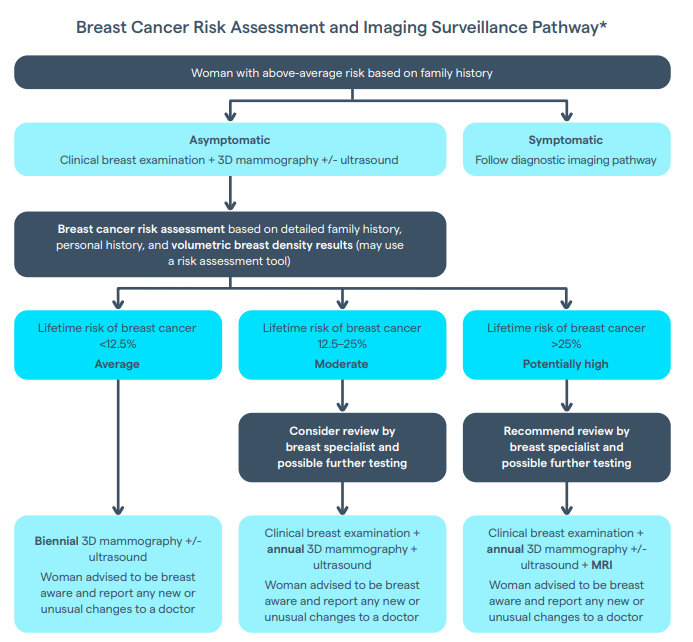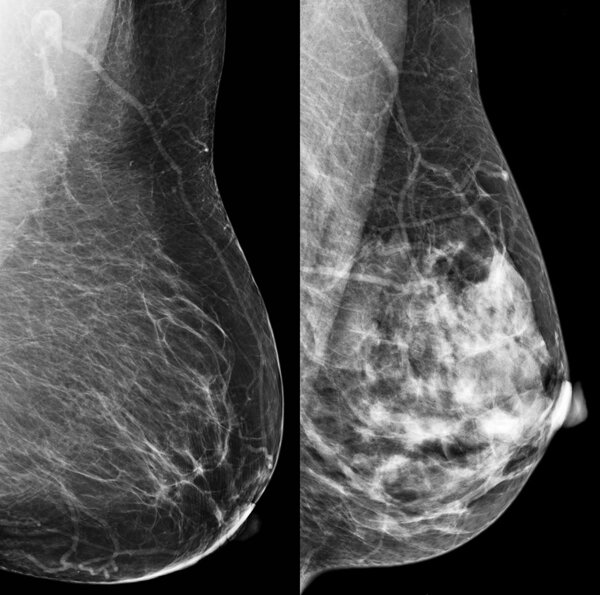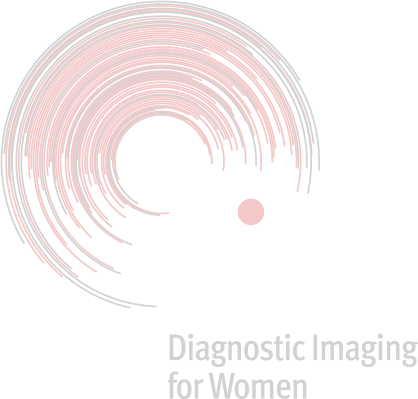Women in our care are increasingly asking questions such as "How often should I have my mammogram?" and "Do I have dense breasts?"
Breast density’s standing as a known risk factor for breast cancer has led Diagnostic Imaging for Women to include a breast density score in our mammography reports.
You can use this score along with a woman's detailed personal and family history to provide her with a breast cancer risk assessment. Breast density results can also help you develop an individualised imaging surveillance program for each woman. Such a program outlines the most appropriate pathway for future imaging, which may include annual 3D mammography and ultrasound supplemented by breast MRI.
What is breast density?
Each woman’s breasts are made up of a unique mix of fatty and fibroglandular tissue. Breast density is the amount of dense, fibroglandular tissue compared with the amount of fatty tissue. On a mammogram, fatty tissue appears dark and fibroglandular tissueappears white. A whiter mammogram means a breast is classified as more dense. Breast density can change throughout a woman’s life due to factors such as weight change, hormone replacement therapy, and monthly hormonal cycles, and typically decreases after menopause.
Approximately 40% of western women have heterogeneously dense breasts (category "c"), and another 10% have extremely dense breasts (category "d"). These women are classified as having dense breasts.

How is breast density measured?
Breast density is determined by a mammogram, not by how the breasts look or feel. Traditionally, this was done using a visual assessment of the mammogram, which is subjective. The radiologist views the mammogram, decides how dense the breast appears, and assigns one of four density categories (see above).
As this visual assessment varies between radiologists, a different approach to measuring breast density was developed, one that achieves a more consistent breast density result and facilitates better management of breast health care.
Diagnostic Imaging for Women uses artificial intelligence–powered assessment technology created by Volpara Health, whose clinically validated algorithms measure breast density automatically and objectively over the entire volume of the breast. This provides consistency to you and the women in your care.
Why is breast density important?
Breast density is important for two reasons:
- Women with higher breast density have a higher risk of developing breast cancer. Those with the densest breasts have 4–6 times greater risk compared with women with the least dense breasts, making breast density itself an independent risk factor for breast cancer.
- Higher breast density also makes it harder for the radiologist to detect breast cancer. Cancers typically appear white on a mammogram and so does normal fibroglandular tissue. If a breast cancer develops in an area of dense, fibroglandular tissue, then it can be hidden or "masked," making the mammogram less accurate or sensitive. This is known as the masking risk.
What should I do if my patient has dense breasts?
Mammography is still the gold standard for detecting breast disease, but has limitations in some women. Diagnostic Imaging for Women uses 3D mammography, also known as tomosynthesis, which may enhance cancer detection. Ultrasound is routinely used to complement mammography, further increasing the chance of cancer detection. MRI may also be useful in a particular cohort of women, including those with high breast density.
Dr Paula Sivyer includes breast density results in her mammography reports to help you develop an individualised imaging surveillance program for each woman. Your program can also include a breast cancer risk assessment to provide an increased understanding of a woman’s risk and support better breast health management. See below for a sample risk assessment and imaging surveillance pathway. Women with above-average risk of breast cancer may warrant a multidisciplinary approach to future management, including referral to a breast specialist for review.

Reference: Breast Screening (Above Average Risk Women) (health.wa.gov.au)
*Pathways may vary subject to patient age and other factors

